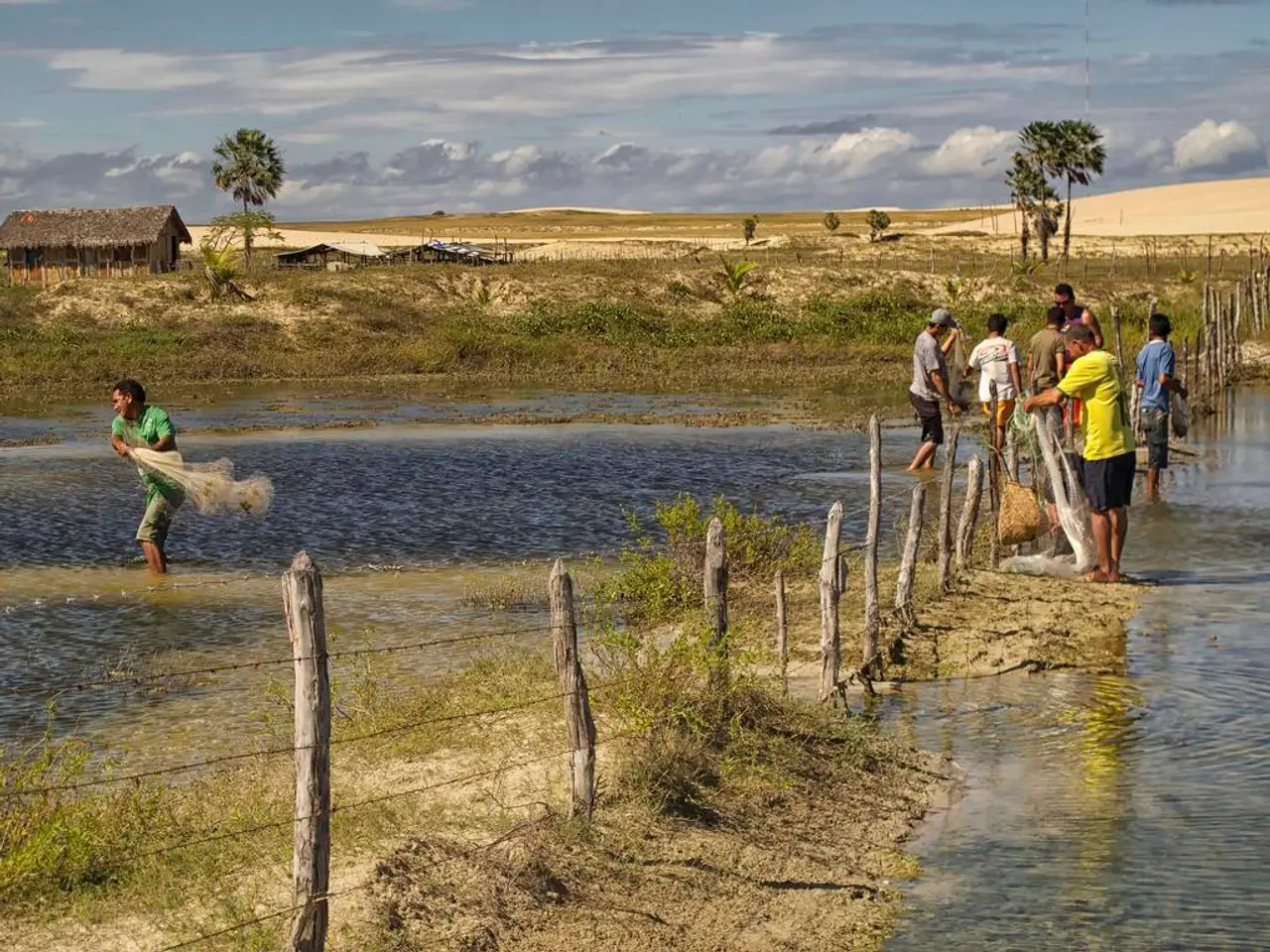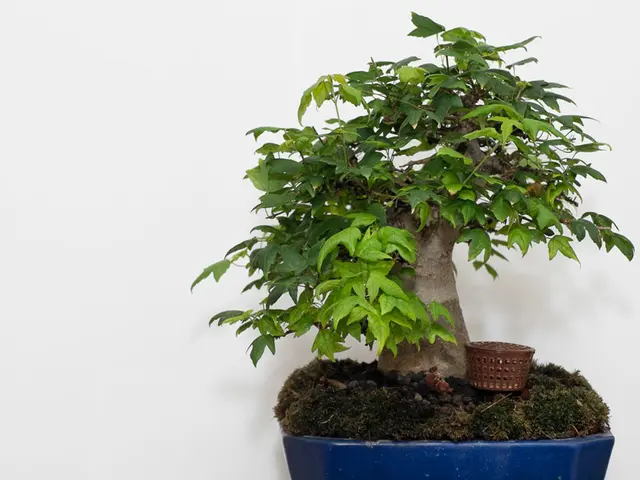Drought-Resistant Water Management Methods in Permaculture
In the quest for sustainable living, permaculture designers are turning to seasonal streams as a valuable resource. These temporary waterways, which flow only during rain or snowmelt, can be harnessed to build landscapes that save water, make the land healthier, and boost productivity.
One of the key strategies in managing seasonal streams is the implementation of swales and contour earthworks. These shallow, level ditches, dug on contour lines, capture and slow surface runoff, allowing water to infiltrate into the soil rather than running off. This helps recharge groundwater and stores moisture in the landscape for later use by plants.
Another important aspect is increasing soil organic matter and mulching. Adding compost and maintaining heavy mulch cover improves soil structure and its capacity to hold water. This enhances water retention around seasonal stream areas and reduces evaporation, making moisture available longer during dry spells.
Using vegetation strategically is another effective approach. Planting deep-rooted perennials, native trees, shrubs, and groundcovers along seasonal streams stabilizes banks, reduces erosion, and increases water infiltration. Vegetation also creates shade that reduces water loss and supports soil microbial life important for water retention.
For any garden or food forest areas fed by seasonal streams, efficient irrigation methods should be implemented. Drip irrigation or slow-release watering techniques, like clay pot Ollas or wicking beds, minimize water waste and evaporation.
Harvesting and storing runoff is another crucial step. Rainwater catchment and storage systems, such as ponds or tanks connected to seasonal stream flows during wetter periods, can store water for use in drought times to irrigate or recharge soil moisture.
Observing and interacting with microclimates is also important. Studying how seasonal water flows relate to sun, wind, and soil types helps selectively placing water conservation structures and plants where they will be most effective.
Involving communities in education is key for permaculture projects by seasonal streams. Hosting workshops and educational programs can raise awareness and support for sustainable water use, deepening understanding of seasonal streams in regenerative agriculture, and making local communities more resilient against drought and climate change.
Seasonal streams offer homes for wildlife and help recharge groundwater. By planting native plants around the stream, we can draw in wildlife, giving them food, shelter, and places to breed. Addressing erosion issues in seasonal streams involves using deep-rooted plants to hold the soil and natural barriers like logs or rocks to keep the soil in place and protect the stream's shape.
Managing invasive species in seasonal streams is important to prevent them from pushing out native species and upsetting the ecosystem. By integrating seasonal streams well, we can place vegetation and structures to prevent erosion, add a variety of native plants, and make sure the stream fits well with the permaculture system.
Seasonal streams, or ephemeral waterways, are key in permaculture. They help replenish aquifers and maintain the water table, supporting the overall water cycle and availability. For permaculture fans facing water scarcity and drought, rainwater harvesting is a vital strategy for saving this valuable resource and boosting drought resilience.
By building soil organic matter and optimizing water infiltration, we can create landscapes that are better equipped to withstand both drought and flood conditions. Designing features that hold water longer, like small dams or pools, is key for aquatic creatures when it's dry.
Incorporating seasonal streams into the permaculture landscape should balance beauty and function, using meandering paths, natural materials, and multi-use areas. Together, these approaches leverage the natural flow and seasonality of streams to increase water infiltration, soil moisture retention, and drought resilience in permaculture landscapes. Maintaining healthy soil biology and biodiversity further strengthens the system’s capacity to conserve water and recover from dry periods.
- Planting native plants around seasonal streams can draw in wildlife, providing them with food, shelter, and breeding places.
- By implementing compost and heavy mulch cover, we can improve soil structure, water retention, and boost productivity in permaculture gardens.
- The use of swales and contour earthworks in landscapes harnesses seasonal streams to save water, make the land healthier, and increase productivity.
- Efficient irrigation methods like drip irrigation and slow-release watering techniques help reduce water waste and evaporation in garden or food forest areas fed by seasonal streams.
- Observing and interacting with microclimates helps selectively place water conservation structures and plants where they will be most effective, enhancing the overall permaculture system.
- Involving communities in education about sustainable water use can raise awareness and support for permaculture projects, making local communities more resilient against drought and climate change.
- Seasonal streams help recharge groundwater and offer homes for wildlife, emphasizing the importance of addressing erosion issues and managing invasive species in these waterways.
- Harvesting and storing runoff from seasonal streams through rainwater catchment and storage systems can provide water for use in drought times.
- By using deep-rooted plants and natural barriers, we can stabilize banks, reduce erosion, and increase water infiltration in seasonal streams, supporting soil microbial life important for water retention.
- Incorporating seasonal streams into a permaculture landscape intelligently balances beauty, function, andresource conservation, Bogliascoleading to stronger soil biology, biodiversity, and increased water infiltration and drought resilience.




